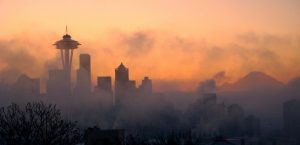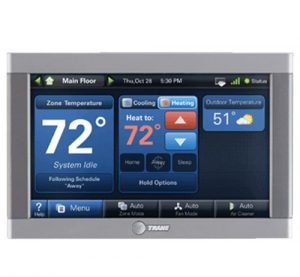Furnace heat exchangers are a must-have utility in any home – especially come the winter time. Though Washington winters are not the coldest in the country, winter weather in Mukilteo can become very chilly if your home is not equipped to withstand the intense cold from the snow.
It is this cold weather that makes a good quality and well-maintained heating system necessary. And everyone knows that an important part of any heating system is a fully-functioning furnace heat exchanger.
However, keeping your heat exchanger in good condition can sometimes be challenging if you are not sure about what to do. In this article, you can learn everything you need to know as a homeowner when it comes to keeping your furnace heat exchanger in proper working order.
What is a Furnace Heat Exchanger?
A furnace heat exchanger is a dedicated part of your house’s heating system where any and all combustion processes for heating take place. Typically made of metal, these heating devices protect your home and the air that you breathe by confining any toxic or dangerous gasses produced during the combustion process.
The heat exchanger of your furnace typically spans the distance between your chimney vent and the main burner assembly. However, furnaces are not the only place where heat exchangers are applicable.
Furnace Heat Exchangers are also a hybrid between a holding chamber and a passage system. This comprehensive system runs through the length of your entire home in order to distribute the heat into the warmed air efficiently and quickly.
This feature may be what makes heat exchangers such a convenient heating solution, but it can also become dangerous if the chamber within cracks.
What Does a Furnace Heat Exchanger Do?
Now that you know what a furnace-type heat exchanger is and how it works, it is important to understand what it does and how it benefits your home.
Air Separation
We already mentioned that a furnace heat exchanger holds a chamber to house the gasses necessary to heat your home. But did you know that it isn’t the only gas that your furnace heater holds? The interior of your heat exchanger is meant to filter the gas and combustion fumes from the air that is safe for your family and pets to breathe.
As the home grows cozier and warmer, the breathable warm air from the furnace heat exchanger is also distributed throughout the home. All while the toxic byproducts of gas and combustion fumes are confined in the furnace heater chamber before being blown back outside of your home.
This process is key to keeping your home safe from flammable gasses or noxious fumes while still getting the job done.
Convenient Heating
Gone are the days when you need to lug around firewood to fuel your fireplace and warm the home. Not only is this a tedious and expensive process, but it is also bad for the environment.
On the other hand, a furnace heat exchanger uses a power source like electricity or fuel in order to draw air from outdoors into your home. This air is then run through a complicated system of vents and coils.
What is a simple task for you is made possible by the complex machinery housed within your heat exchanger. The air within is then safely heated and filtered before it is blown into your living spaces.
By acquiring a furnace heat exchanger heating system, you can experience a seamless and easy way to warm your home without ever having to lift or burn another piece of wood again.
What are the Warning Signs for a Broken Furnace Heat Exchanger?
More often than not, many of us only think about our utilities upon their installation in our homes. However, it is important to break this habit so you can stay on top of any repairs and maintenance work that your heat exchanger might need so you can prolong its lifespan.
Here are a few early warning signs to watch out for so you can report incidents of heat exchanger failure to your designated provider.
Foul Smells
The separation of toxic and flammable gasses is one of the key functions that your furnace heat exchanger carries out to keep your home safe and sound. If you or any member of your household picks up on strange smells and unpleasant odors, it may be best to quickly dial your heating provider.
If left unattended these strange odors can actually cause harm to your loved ones. Some of the gaseous byproducts may lead to deadly monoxide poisoning, with side effects like vomiting, fever, and more.
If not poisonous, then these rogue gasses may pose a different kind of risk. Flammable gasses like this can quickly catch fire when exposed to open flame in the kitchen, causing a fiery explosion if you are not careful.
At the first hint of these strange odors, it is best to call your trusted heating provider for immediate repair and recommendations. They may advise you to evacuate your home temporarily as they carry out the repairs needed to clear your home of any poisonous and flammable gasses.
Loud Noises
Have you been hearing strange noises from your ceiling, walls, or floor? Don’t call the Ghostbusters just yet!
The mysterious noises may be coming from the system that delivers warm air to the different parts of your home. This may indicate a serious problem from within your furnace heater.
The noises can range from internal parts that may have come loose over time, or from any debris that has managed to enter the heating vents. Depending on the size of the item, this can be a small issue or a serious problem as the vent system takes damage from the loose object or debris.
The sooner your provider manages to clear the obstruction, the better. This is because furnace components are sensitive and complex, so any loose elements may damage the system and force you to replace the heat exchanger entirely.
Cold Spots
Notice any cold spots in your home? Drop the burning sage and consider calling your heating provider first. If you suspect that your heat exchanger is cracked or damaged, then your furnace may be experiencing difficulty in generating heat for your home.
The cold spots you may be experiencing are likely due to a dip in efficiency or an obstruction to how the heat is funneled through your home’s heating vents. Give your HVAC technician a call so you can narrow down the root of the problem.
Early diagnosis means that you can address the poor heating and prevent heat exchanger failure before the problem gets any worse.
What are the Risks of a Damaged Heat Exchanger?
Because they play such a large role in your home, a cracked or damaged heat exchanger can also make an equally big impact on the safety of the structure. Below are some of the risks that a cracked heat exchanger poses.
Poisonous Gas Leaks
Cracks compromise the integrity and strength of your furnace heat exchanger. A well-maintained heat exchanger can trap potentially toxic glasses inside your home and poison you and your loved ones.
Some toxic gasses that you need to be aware of include carbon monoxide, sulfur dioxide, and nitrogen dioxide – with the most dangerous of these being carbon monoxide. Carbon monoxide is both odorless and colorless, and can cause mild complications such as headaches, dizziness, and vomiting, as well as stomach and chest pains.
While these may seem like nothing to worry about. Prolonged exposure can lead to asphyxiation and death, so it would be a good idea to report any early signs of cracking to your provider.
Pay close attention especially if you notice that you, your family, or your pets are starting to exhibit symptoms of carbon monoxide mentioned above!
Fire Hazards
The gasses above are not the only ones you need to worry about. Housefires can happen if you leave furnace heat exchangers unattended.
Should any flammable natural gasses leak into your home and make contact with exposed open flame from a cooking range or a candle, it can cause a fire or explosion in your home without you even knowing.
To prevent this from happening, you must pay close attention to any unusual smells or sounds like hissing or that you hear from your heating system. A loud furnace with inexplicable smells can indicate that the natural gas is leaking into your home and compromising your family’s safety.
Reduced Heating Efficiency
Aside from the obvious threat to your safety, any sort of crack or damage to your furnace heater can compromise the effectiveness that your heat system has when distributing warmth to the various areas of your home. If left unattended, this can quickly drive up the cost of your utilities so that you actually pay more money for less warmth.
Avoid experiencing an inefficient heat system right when you need it most this winter by taking note of any inconsistencies in heat distribution such as cold spots on your walls and floors. Be sure to report any findings to a firm that carries out furnace repair in Seattle so you don’t suffer from a freezing winter.
Know the State of Your Furnace Heat Exchanger at All Times
Like any utility present in your home, knowing everything about your furnace heat exchanger is not only good practice as a home owner so you can save money and maximize its lifespan. It is also good practice so that you can ensure the safety of your home especially come the unpredictable winter time.
Contact a reliable contractor in Mukilteo, WA for any questions you might have on the repairs and maintenance of your furnace heat exchanger unit so that you can quickly get to know the state of your furnace heat exchanger as well as identify problems so you can fix them at the source before they pose any serious risks.
Call (855) 345-6161
Our team of on-hand experts and technicians will happily entertain your queries and send in qualified staff to examine your unit at your convenience. Schedule an appointment today!







